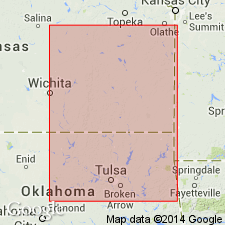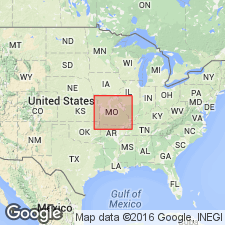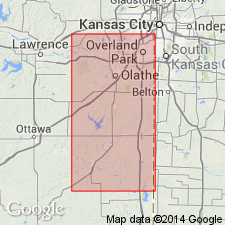
- Usage in publication:
-
- Garnett limestone
- Modifications:
-
- Original reference
- Dominant lithology:
-
- Limestone
- AAPG geologic province:
-
- Forest City basin
Summary:
Pg. 110, 120-121. Hard compact limestones, separated into two parts by 8 to 10 feet of shale. Here called Burlington or Garnett limestone, ultimate choice of name being left to future. Overlies Le Roy shales. Separated from higher Strawn limestone by 75 to 100 feet of shale. Age is Pennsylvanian.
Source: US geologic names lexicon (USGS Bull. 896, p. 802).

- Usage in publication:
-
- "Garnett limestone"
- Modifications:
-
- Revised
Summary:
"Garnett limestone" of Kansas includes (descending) Stanton limestone, Vilas shale, and Plattsburg limestone.
Source: US geologic names lexicon (USGS Bull. 896, p. 802).

- Usage in publication:
-
- Garnett limestone†
- Modifications:
-
- Abandoned
Summary:
Pg. 70. †Garnett limestone. Moore's restricted Lansing group, to include only Stanton limestone, Vilas shale, and Plattsburg limestone, corresponds to Garnett limestone of early Kansas Survey. The revival of Garnett might not be desirable, however, inasmuch as the term has been used for several different units and has never had wide acceptance.
Source: US geologic names lexicon (USGS Bull. 896, p. 802).
For more information, please contact Nancy Stamm, Geologic Names Committee Secretary.
Asterisk (*) indicates published by U.S. Geological Survey authors.
"No current usage" (†) implies that a name has been abandoned or has fallen into disuse. Former usage and, if known, replacement name given in parentheses ( ).
Slash (/) indicates name conflicts with nomenclatural guidelines (CSN, 1933; ACSN, 1961, 1970; NACSN, 1983, 2005, 2021). May be explained within brackets ([ ]).

